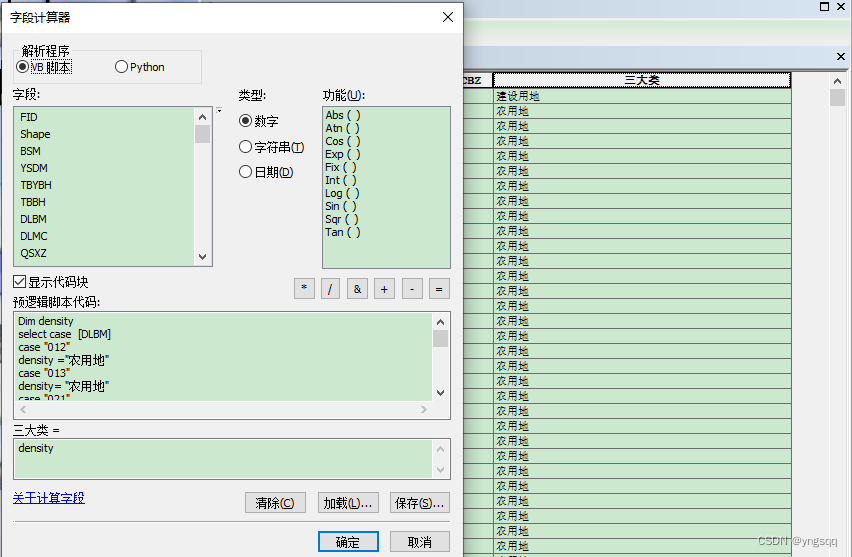方式一(最新代码,时间:2023/8/27)
(1)如何配置系统变量
(2)完整代码
方式二(跟黑马最新教程同代码)
(1)在复制下来的代码中
(2)完整代码
方式一(最新代码,时间:2023/8/27)
(1)打开设置
(2)选择—-系统信息
(3)选择—-高级系统设置
(4)选择—-环境变量
(5)选择—-系统变量这栏—–新建
(6)在“变量名”输入框中输入 OSS_ACCESS_KEY_ID,在“变量值”输入框中输入你的Access Key ID。再次点击“新建”按钮,输入变量名为 OSS_ACCESS_KEY_SECRET,变量值为您的Access Key Secret。在这里插入图片描述
在这里插入图片描述
(7)点击“确定”保存设置。
(2)完整代码
代码复制下来基本不变,只需要更改对应位位置的值,改成自己的对象存储oss的相关信息.包括:
endpoint 是用来指定阿里云 OSS 服务的访问域名或URL。
填写Object完整路径,完整路径中不能包含Bucket名称,例如 String objectName = “1.txt“;表示存在Bucket该目录下
填写本地文件的完整路径,例如D:C:\Users\ZJ\Desktop\1.txt。如果未指定本地路径,则默认从示例程序所属项目对应本地路径中上传文件流。sql String filePath= “C:\Users\ZJ\Desktop\1.txt“;
import com.aliyun.oss.ClientException;
import com.aliyun.oss.OSS;
import com.aliyun.oss.common.auth.*;
import com.aliyun.oss.OSSClientBuilder;
import com.aliyun.oss.OSSException;
import com.aliyun.oss.model.PutObjectRequest;
import com.aliyun.oss.model.PutObjectResult;
import java.io.FileInputStream;
import java.io.InputStream;
public class Demo {
public static void main(String[] args) throws Exception {
// Endpoint以华北2(北京)为例,其它Region请按实际情况填写。
String endpoint = "https://oss-cn-beijing.aliyuncs.com";
// 从环境变量中获取访问凭证。运行本代码示例之前,请确保已设置环境变量OSS_ACCESS_KEY_ID和OSS_ACCESS_KEY_SECRET。
EnvironmentVariableCredentialsProvider credentialsProvider = CredentialsProviderFactory.newEnvironmentVariableCredentialsProvider();
// 填写Bucket名称,例如web-3tlias。
String bucketName = "web-3tlias";
// 填写Object完整路径,完整路径中不能包含Bucket名称,例如1.txt。
String objectName = "1.txt";
// 填写本地文件的完整路径,例如D:C:\Users\ZJ\Desktop\1.txt。
// 如果未指定本地路径,则默认从示例程序所属项目对应本地路径中上传文件流。
String filePath= "C:\Users\ZJ\Desktop\1.txt";
// 创建OSSClient实例。
OSS ossClient = new OSSClientBuilder().build(endpoint, credentialsProvider);
try {
InputStream inputStream = new FileInputStream(filePath);
// 创建PutObjectRequest对象。
PutObjectRequest putObjectRequest = new PutObjectRequest(bucketName, objectName, inputStream);
// 创建PutObject请求。
PutObjectResult result = ossClient.putObject(putObjectRequest);
} catch (OSSException oe) {
System.out.println("Caught an OSSException, which means your request made it to OSS, "
+ "but was rejected with an error response for some reason.");
System.out.println("Error Message:" + oe.getErrorMessage());
System.out.println("Error Code:" + oe.getErrorCode());
System.out.println("Request ID:" + oe.getRequestId());
System.out.println("Host ID:" + oe.getHostId());
} catch (ClientException ce) {
System.out.println("Caught an ClientException, which means the client encountered "
+ "a serious internal problem while trying to communicate with OSS, "
+ "such as not being able to access the network.");
System.out.println("Error Message:" + ce.getMessage());
} finally {
if (ossClient != null) {
ossClient.shutdown();
}
}
}
}
EnvironmentVariableCredentialsProvider credentialsProvider = CredentialsProviderFactory.newEnvironmentVariableCredentialsProvider();
1
String accessKeyId=”/your accessKeyId“;
String accessKeySecret=”your accessKeySecret”;
1
2
然后将
OSS ossClient = new OSSClientBuilder().build(endpoint, credentialsProvider);
1
这一句改成
OSS ossClient = new OSSClientBuilder().build(endpoint, accessKeyId,accessKeySecret);
1
(2)完整代码
import com.aliyun.oss.ClientException;
import com.aliyun.oss.OSS;
import com.aliyun.oss.common.auth.*;
import com.aliyun.oss.OSSClientBuilder;
import com.aliyun.oss.OSSException;
import com.aliyun.oss.model.PutObjectRequest;
import com.aliyun.oss.model.PutObjectResult;
import java.io.FileInputStream;
import java.io.InputStream;
public class Demo {
public static void main(String[] args) throws Exception {
// Endpoint以华北2(北京)为例,其它Region请按实际情况填写。
String endpoint = "https://oss-cn-beijing.aliyuncs.com";
// 从环境变量中获取访问凭证。运行本代码示例之前,请确保已设置环境变量OSS_ACCESS_KEY_ID和OSS_ACCESS_KEY_SECRET。
//EnvironmentVariableCredentialsProvider credentialsProvider = CredentialsProviderFactory.newEnvironmentVariableCredentialsProvider();
String accessKeyId="LTAI5t7jEXfK1jYtY1rCPtc9"; //your accessKeyId
String accessKeySecret="cQjd70rASM7mwmefIwm4DEbgRtph9s";//your accessKeySecret
// 填写Bucket名称,例如web-3tlias。
String bucketName = "web-3tlias";
// 填写Object完整路径,完整路径中不能包含Bucket名称,例如1.txt。
String objectName = "1.txt";
// 填写本地文件的完整路径,例如D:C:UsersZJDesktop1.txt。
// 如果未指定本地路径,则默认从示例程序所属项目对应本地路径中上传文件流。
String filePath= "C:\Users\ZJ\Desktop\1.txt";
// 创建OSSClient实例。
//OSS ossClient = new OSSClientBuilder().build(endpoint, credentialsProvider);
OSS ossClient = new OSSClientBuilder().build(endpoint, accessKeyId,accessKeySecret);
try {
InputStream inputStream = new FileInputStream(filePath);
// 创建PutObjectRequest对象。
PutObjectRequest putObjectRequest = new PutObjectRequest(bucketName, objectName, inputStream);
// 创建PutObject请求。
PutObjectResult result = ossClient.putObject(putObjectRequest);
} catch (OSSException oe) {
System.out.println("Caught an OSSException, which means your request made it to OSS, "
+ "but was rejected with an error response for some reason.");
System.out.println("Error Message:" + oe.getErrorMessage());
System.out.println("Error Code:" + oe.getErrorCode());
System.out.println("Request ID:" + oe.getRequestId());
System.out.println("Host ID:" + oe.getHostId());
} catch (ClientException ce) {
System.out.println("Caught an ClientException, which means the client encountered "
+ "a serious internal problem while trying to communicate with OSS, "
+ "such as not being able to access the network.");
System.out.println("Error Message:" + ce.getMessage());
} finally {
if (ossClient != null) {
ossClient.shutdown();
}
}
}
}————————————————
版权声明:本文为CSDN博主「语言-逆行者」的原创文章,遵循CC 4.0 BY-SA版权协议,转载请附上原文出处链接及本声明。
原文链接:https://blog.csdn.net/weixin_61605998/article/details/132527298
原文地址:https://blog.csdn.net/qq_35622606/article/details/134654924
本文来自互联网用户投稿,该文观点仅代表作者本人,不代表本站立场。本站仅提供信息存储空间服务,不拥有所有权,不承担相关法律责任。
如若转载,请注明出处:http://www.7code.cn/show_32010.html
如若内容造成侵权/违法违规/事实不符,请联系代码007邮箱:suwngjj01@126.com进行投诉反馈,一经查实,立即删除!







